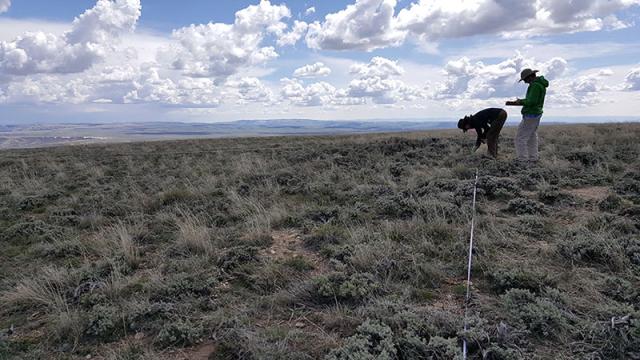BLM invests $17.6 million from Investing in America agenda to improve public lands monitoring
Organization:
Media Contact:
WASHINGTON – With a $17.6 million investment from the Biden-Harris Administration’s Inflation Reduction Act, the Bureau of Land Management is expanding efforts to monitor, inventory, and assess baseline conditions of the nation’s public lands and waters. The funds will provide for thousands of additional monitoring sites in the western U.S., and enhance ecosystem monitoring partnerships with other organizations.
Among the projects is an expanded interagency agreement worth $7.6 million with the Natural Resources Conservation Service (NRCS) to monitor rangeland conditions in 13 western states. Starting in October, the BLM and NRCS will collect about 3,000 data points to establish baseline conditions and assess changes over time.
Another $7.4 million for partnerships in individual states will monitor riparian, stream, river, and wetland health. BLM and its state partners will add nearly 700 monitoring sites in streams and rivers, and another 625 monitoring locations in wetlands and riparian areas.
“This investment in public lands monitoring through the President’s Investing in America agenda will provide BLM with a more detailed picture of public rangeland health, which will in turn help us to better manage our public lands,” said BLM Director Tracy Stone-Manning. “Partnerships like these with NRCS and other organizations put hundreds of people to work on our public lands each year and are critical to the health of our nation’s lands.”
The BLM is also investing $2.6 million to hire staff, increasing the capacity of the bureau to interpret and analyze the collected data. These positions will support evidence-based decision-making across the BLM’s program areas and help ensure the health and resilience of public lands into the future.
Monitoring data and analyses inform:
- land use plans and plan evaluations;
- wildlife habitat assessments;
- authorizations of permitted uses;
- restoration planning and effectiveness evaluations; and
- national monument planning.
The data collected in the field is also used by the BLM's field offices to assess the health of uplands, streams and rivers, and wetlands and riparian areas.
Additional funding fits with the BLM’s ongoing efforts to collect data that inform land health assessments. Those assessments are the BLM’s primary way to understand the condition of public lands, identify where restoration efforts are needed, and direct which restoration activities will best yield positive changes. Visit BLM.gov/AIM for more information on how the Bureau uses data and people to make better decisions.
The BLM manages more than 245 million acres of public land located primarily in 12 western states, including Alaska, on behalf of the American people. The BLM also administers 700 million acres of sub-surface mineral estate throughout the nation. Our mission is to sustain the health, diversity, and productivity of America’s public lands for the use and enjoyment of present and future generations.

